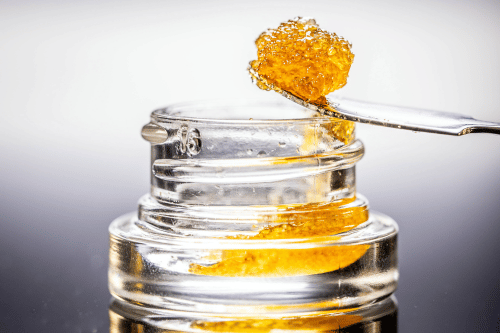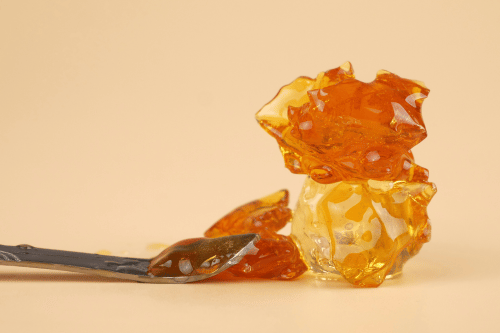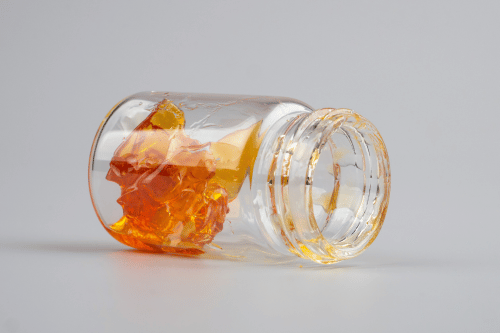

Dabs are becoming increasingly popular as a form of consuming cannabis due to their potency and quick effects. Dabs, which are a type of cannabis concentrates, are known for their refined nature and variety. But how long do dabs last, both in terms of the high they produce and their detectability in the body? This is a vital question for users who may be concerned about drug tests or legal issues, as well as for those monitoring their overall health.
This article will explore how long dabs last, how long they stay in your system, and what factors influence their detectability in drug tests. For individuals using dabs, knowing these details is crucial for understanding the risks associated with concentrated cannabis use.
Dabs are a highly concentrated form of cannabis, typically in the form of wax, shatter, or oil, containing concentrated THC extracted from the marijuana flower through a pressing process. They are consumed through a process known as “dabbing,” which involves heating a small amount of the concentrate and inhaling the vapor. Dabs can contain up to 90% THC, compared to traditional cannabis flower, which generally contains between 10-20% THC. Because of this, dabs produce a much stronger high than smoking cannabis flower.
Dabbing has become popular due to its efficiency. Users only need a small amount to achieve the desired effects, making it a preferred method for people seeking a powerful high. However, with this potency comes the need for caution, especially regarding how long the effects last and how long THC from dabs remains detectable in the body.

The duration of the high from dabs varies depending on several factors, but on average, the effects can last between 1 to 3 hours. However, this range can be influenced by:
User’s Metabolism: The user’s metabolism plays a significant role in how long the effects of dabs last. Individuals with faster metabolisms may process THC more quickly, leading to a shorter duration of effects.
THC Concentration: Since dabs are highly concentrated, a small amount can produce stronger effects that last longer than typical marijuana flower consumption.
Tolerance: People who use dabs or other cannabis products regularly may develop a tolerance, meaning they need more to achieve the same effects, but the high may not last as long as it would for a novice user.
Method of Consumption: Whether using a dab rig, dab pen, or other devices can also influence how long the effects last, as different methods deliver THC into the body at different rates.
For users new to dabbing, the high can be more intense and may feel overwhelming compared to smoking cannabis flower. It’s common for new users to feel the effects for the full 3 hours, while more experienced users may notice the effects taper off sooner.

The high from dabs may only last a few hours, but THC and its metabolites can remain in your system for much longer. How long dabs stay in your system depends on a variety of factors, including your frequency of use, body composition, and the type of drug test administered. The testing method used (urine, saliva, blood, or hair) can significantly influence the duration THC remains detectable in the body, highlighting the importance of understanding these methods for both personal insight and legal ramifications. Here’s a breakdown of how long THC from dabs can be detected in different drug tests:
Urine testing is the most common method for detecting cannabis use. THC metabolites can be detected in urine for different lengths of time, depending on the user’s habits:
Occasional Users (1-3 times a week): THC metabolites may be detectable for up to 3 days after the last use.
Moderate Users (4-5 times a week): THC may be detected for up to 7-10 days.
Chronic Users (daily use): In chronic users, THC can be detected in urine for up to 30 days or longer.
Heavy Users (multiple times a day): THC can remain detectable for even longer, sometimes extending past 45 days.
The reason THC stays in the body so long after dabbing is that it’s stored in fat cells. When THC is metabolized, it gets broken down into metabolites that can be detected in urine tests. Since fat cells store these metabolites, they are released slowly over time, leading to longer detection periods.
Blood tests are less common for detecting THC but are sometimes used in certain legal situations, such as in roadside drug tests. THC is detectable in blood shortly after consumption, typically within minutes, and remains detectable for:
Occasional Users: 1-2 days.
Moderate Users: 2-7 days.
Chronic Users: Up to 30 days.
Blood tests measure active THC levels, meaning they detect the THC that is currently in the bloodstream and causing psychoactive effects. Since THC is rapidly metabolized, it’s usually only detectable in blood for a few hours to a couple of days, depending on how frequently you use cannabis.
Saliva tests are often used in roadside drug testing because they’re non-invasive and can detect THC use shortly after consumption. Saliva tests are generally effective at detecting THC for:
Occasional Users: 1-3 days.
Chronic Users: Up to 7 days.
Saliva testing detects the presence of THC itself, rather than its metabolites, which is why it’s often used to determine recent use. Dabs may be detectable in saliva for a shorter time than in other drug testing methods, but frequent users may still test positive several days after their last dab.
Hair testing has the longest detection window of any drug test and can detect THC use for up to 90 days. This is because metabolites are deposited into the hair follicles through the bloodstream, and as hair grows, these metabolites are trapped in the hair shaft.
All Users: Up to 90 days.
Hair tests are less commonly used because they’re more expensive and are generally reserved for cases where long-term cannabis use is suspected.

Several factors influence how long dabs and their metabolites stay in your system. Some of these factors include:
The more often you use dabs, the longer THC will stay in your system. This is because THC accumulates in fat cells over time. For example, a person who uses dabs once a month will eliminate THC from their system much faster than someone who uses dabs daily. In comparison, ordinary cannabis flower can lose a significant amount of its potency over time, with studies showing a 17% loss at room temperature over a year, emphasizing the importance of proper storage to maintain its quality.
Since THC metabolites are stored in fat cells, people with higher body fat percentages may retain these metabolites for longer periods. This means that individuals with more body fat will likely have THC in their system for extended periods compared to someone with less body fat.
Metabolism plays a significant role in how quickly THC is processed and eliminated from the body. People with fast metabolisms may process and eliminate THC more quickly than those with slower metabolisms.
Drinking plenty of water can help flush out THC metabolites more quickly. Similarly, eating a healthy diet rich in fiber can support the body’s natural detoxification processes. Although these methods won’t drastically speed up the process, they can help ensure that the body is functioning optimally to eliminate THC.
The type of cannabis concentrate used can also affect how long THC stays in your system. Concentrates with higher THC levels, such as shatter or wax, may result in longer detection times compared to lower-THC concentrates like oils or tinctures.

Dabs can be consumed using various methods, including dab rigs, dab pens, and vaporizers. The method of consumption can influence how much THC enters your bloodstream and how long it stays there. For example, dabbing with a rig may result in a higher concentration of THC entering the body quickly, while using a dab pen may provide a slower, more controlled release of THC.
THC, the active compound in cannabis, is broken down into metabolites in the body. These metabolites, specifically THC-COOH, are what drug tests typically detect. Once THC enters the body, it’s processed by the liver, which converts it into various metabolites. These metabolites are stored in fat cells and released slowly over time, which is why THC can be detected in drug tests long after the effects have worn off.
Detecting marijuana use involves various drug testing methods, each with its own detection window and level of accuracy. Understanding these methods is crucial for anyone concerned about testing positive for THC metabolites. The most common types of drug tests include urine tests, blood tests, saliva tests, and hair tests.
Urine Tests are the most frequently used method for detecting marijuana use. They are effective at identifying THC metabolites, which are stored in fat cells and released slowly over time. This makes urine tests particularly useful for detecting recent and chronic use.
Blood Tests measure the active THC levels in the bloodstream. While they are less common, they are often used in legal situations, such as roadside drug tests. Blood tests can detect THC shortly after consumption, but the detection window is relatively short compared to other methods.
Saliva Tests are non-invasive and can detect THC use shortly after consumption. They are commonly used in roadside drug testing due to their convenience and quick results. Saliva tests are effective for identifying recent use but have a shorter detection window than urine or hair tests.
Hair Tests have the longest detection window, capable of identifying THC use for up to 90 days. This method is less commonly used due to its higher cost but is valuable for detecting long-term cannabis use. Metabolites are deposited into hair follicles through the bloodstream, making hair tests a reliable indicator of prolonged use.
Understanding these testing methods and their detection windows can help users make informed decisions about their cannabis consumption and prepare for potential drug tests.
While there’s no foolproof way to eliminate THC from your system quickly, there are some strategies that may help reduce the likelihood of testing positive on a drug test:
1. Time: The most effective way to avoid testing positive is to simply wait. If you know you have a drug test coming up, abstaining from dabs and other cannabis products for at least 30 days is the best way to ensure you pass the test.
2. Hydration: Drinking plenty of water can help flush out THC metabolites from your system, though this process can take time. Staying hydrated can also help dilute urine, which may reduce the concentration of THC metabolites detected in a urine test.
3. Exercise: THC is stored in fat cells, so burning fat through exercise can help release these stored metabolites, allowing your body to eliminate them more quickly. However, it’s important to note that exercising shortly before a drug test may temporarily increase THC levels in your blood and urine as the metabolites are released from fat cells.
4. Diet: Eating a healthy diet that’s rich in fiber can support your body’s detoxification process. Fiber helps your body eliminate waste, including THC metabolites, more efficiently.
If you’re concerned about passing a drug test, there are several strategies you can employ to increase your chances of testing negative for THC metabolites. Here are some practical tips to help you prepare:
Understand How THC is Detected: THC, the primary psychoactive compound in marijuana, is metabolized by the liver into various metabolites. These metabolites are primarily excreted through urine, which is why urine tests are so common.
Know the Detection Window: The detection window for THC in urine varies based on usage habits and individual body composition. Heavy users can test positive for up to 30 days after their last use, while moderate users may test positive for up to 10 days.
Stay Hydrated: Drinking plenty of water can help flush out THC metabolites from your system. Aim to drink at least 8-10 glasses of water per day to support your body’s natural detoxification processes.
Exercise Regularly: Regular exercise can boost your metabolism, aiding in the elimination of THC metabolites. However, avoid excessive exercise right before a drug test, as it can temporarily increase THC levels in your blood and urine.
Eat a Healthy Diet: A diet rich in fruits, vegetables, and whole grains can support your body’s detoxification processes. Fiber, in particular, helps your body eliminate waste, including THC metabolites, more efficiently.
Avoid Fatty Foods: Fatty foods can slow down your metabolism, prolonging the detection window for THC. Try to avoid fatty foods, especially in the days leading up to a drug test.
Consider a Detox Program: If you are a heavy user, a detox program may help speed up the elimination of THC metabolites from your system. Choose a reputable program that is safe and effective.
Be Aware of False Positives: Certain foods, medications, and supplements can cause false positives on drug tests. Be mindful of these potential triggers and avoid them in the days leading up to your test.
By following these tips, you can help reduce the likelihood of testing positive for THC metabolites and increase your chances of passing a drug test.
Properly storing dabs is essential to maintaining their potency over time. If dabs are exposed to air, light, or heat, their THC content can degrade, leading to a loss of potency. To keep dabs fresh and potent for as long as possible, store them in an airtight container in a cool, dark place. When stored properly, dabs can remain potent for up to a year.
Light Exposure: Dabs exposed to light can lose potency more quickly. Keep dabs in a dark container or in a drawer to minimize light exposure.
Heat Exposure: Heat can cause dabs to degrade faster, so it’s important to store them at room temperature or in a cooler environment.
Air Exposure: Exposure to air can cause dabs to dry out and lose potency. Using an airtight container will help prevent this.
Understanding how long dabs last, both in terms of the high and their detectability in drug tests, is crucial for users. While the high from dabs may only last a few hours, THC metabolites can remain in the body for days, weeks, or even months, depending on how often you use and your body’s unique characteristics.
For individuals concerned about drug tests or legal implications, being aware of how long dabs stay in your system is essential. By understanding the factors that influence detection times—such as frequency of use, body composition, and metabolism—you can make informed decisions about your cannabis consumption.
If you or someone you know is struggling with substance use, Sullivan Recovery offers comprehensive addiction treatment services. Reach out today for help and guidance on your journey to recovery.

At Sullivan Recovery, as an in-network provider we work with most insurance plans, such as:
And More
If you or a loved one are struggling with mental health challenges or substance abuse, reach out to Sullivan Recovery today. Our team of compassionate professionals is here to support your journey towards lasting well-being. Give us a call at 949-836-7180.
The high from dabs typically lasts between 1 to 3 hours, depending on factors such as the user’s metabolism, the concentration of THC in the dab, and the user’s tolerance to cannabis. New users may feel the effects for longer, while experienced users might notice a shorter duration.
Dabs can be detected in drug tests for varying amounts of time, depending on the method of testing. THC can remain detectable in:
Several factors influence how long THC from dabs stays in your system, including frequency of use, body fat, metabolism, and the type of cannabis concentrate used. Regular users and individuals with higher body fat percentages may retain THC metabolites for longer periods.
To maintain potency, dabs should be stored in an airtight container in a cool, dark place. Exposure to light, air, and heat can degrade THC, causing the dabs to lose their potency over time. When stored properly, dabs can stay potent for up to a year.